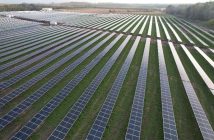- Woodmac’s latest scenario report reveals that a significant increase in carbon pricing is needed to achieve the goals of limiting the rise in global temperatures to within 1.5 degrees Celsius.
- The report looks at Wood Mackenzie’s assessment of what it would take to reach the most ambitious goals of the Paris Agreement.
Global average temperatures are already 1.2 degrees C above pre-industrial levels; limiting the increase to 1.5 degrees C would be unachievable without rapid and sustained action. Carbon removal is imperative in a net-zero world.
Wood Mackenzie Asia Pacific Head of Markets and Transitions, Prakash Sharma, said: “To be on a 1.5-degree pathway, carbon support prices will need to reach US$160 per tonne (t) of CO2 by 2030. The global average carbon price across various regimes stood at US$22/tCO2 at the end of 2020.”
Governments around the world need carbon policies that target hard-to-abate industries, for example by facilitating low-carbon hydrogen production. They also need to deliver negative emissions. Abatement costs can be met via carbon prices, direct incentives, or tax policies. The application will vary by country, region, sector and technology. For example, policy makers may combine carbon, capture and storage (CCS) and Direct Air Capture (DAC) with other measures to lower the overall impact of carbon emissions abatement.
Wood Mackenzie Principal Analyst Energy Transition Practice, Tom Heggarty, said: “Getting to 1.5 degrees will be impossible without capturing, storing and using huge volumes of CO2. Capture and storage of CO2 is only one part of the equation. There are opportunities to commercialise and use captured carbon.”
Utilising captured CO2 reduces the unit cost of abatement. It already has established uses in the enhanced oil recovery and beverages industries, while new applications are emerging. Captured carbon can also be recycled into new products, storing CO2 permanently, and reducing the carbon footprint of several key industries such as cement, methanol and fertilisers. Currently, these products are produced using hydrocarbons. If these industries fully switch to using recycled CO2, there is potential to eliminate 3.5 billion tonnes (Bt) carbon.
The power and industrial sectors will play an important role in decarbonisation towards a 1.5-degree scenario. By 2050, 8 BtCO2 could be captured and removed from these high carbon-emitting sectors. A further 4 BtCO2 could also be removed through nature-based solutions such as reforestation and soil farming. In all, total carbon removal capacity could reach 12 BtCO2 which is equivalent to 350 billion trees planted.
In Wood Mackenzie’s base case, total carbon removals are limited to 0.5 BtCO2 by 2050.
Wood Mackenzie Americas Head of Markets and Transitions, David Brown, said: “US$ 50 trillion is the minimum capex level required to reach a 1.5-degree world. US$27 trillion will come from new power capacity, energy storage, electrolysers and CCS deployments through to 2050, while US$23 trillion is required to cover associated infrastructure, battery metals and hydrocarbons.”
Sharma said: “The investment requirement must be balanced with the cost of inaction. The later emissions peak, the more funds will be spent on dealing with the impact of climate change than on the energy transition.”
Heggarty said: “Mitigating energy-sector emissions alone is not enough. A 1.5-degree pathway cannot be reached without addressing the negative impact of land use changes. In a net-zero world, the focus shifts to all areas of the economy, prioritising those that preserve biodiversity and restore nature.”
Markets facing land constraints and geological issues in storage could facilitate CO2 shipping and transportation to countries where these challenges are less pronounced. For example, Japan could transport CO2 to Australia or Southeast Asia for storage or use.
In addition, CO2 can be liquefied and transported over long distances which could facilitate the capture and storage of carbon in markets without adequate domestic storage capacity. This paves the way for CO2 hub and spoke arrangement where each activity – transport, storage or use – could be undertaken by a third party, driving costs down through economies of scale.
Sharma said: “It is time to think about making money out of CO2 emissions. Technologies to recycle carbon into new products are available but they are expensive and need strong policy action. If all goes well, this could become a trillion-dollar industry globally.”
Author: Bryan Groenendaal
Source: Woodmac











